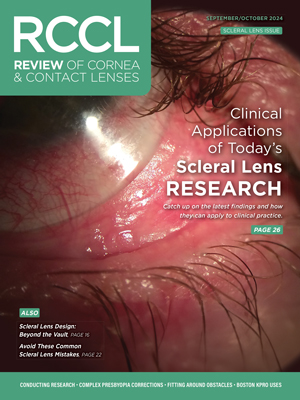Patients with type 2 diabetes may be more likely to also have keratoconus, and cases of the corneal disease in patients with type 2 diabetes may be more severe, according to a study published in the August 2014 issue of Cornea.
In the first of two substudies, researchers compared the existence of type 1 and type 2 diabetes in patients with and without keratoconus; the second substudy examined the severity of keratoconus in affected patients with and without diabetes. In both studies, patients were separated into several age groups, including one encompassing ages 20-40 for comparison to earlier research conducted in 2000.
In the first substudy, 1,377 patients with keratoconus were identified through a computerized electronic health records search, while 4,131 control patients without keratoconus were selected using a random number generator. Each keratoconus-affected patient was matched to three control patients by sex and age.
The researchers found that while the number of patients with type 1 diabetes in the keratoconus-affected group and the keratoconus-free control group did not differ significantly, the amount of patients with type 2 diabetes in each group did. In particular, patients with keratoconus between the ages of 25-44 and 45-64 were more inclined to have type 2 diabetes than those without the degenerative eye disorder in the same age ranges.
The researchers also correlated the presence of type 2 diabetes with the severity of keratoconus, finding in the second substudy that patients with type 2 diabetes were more likely to also have more severe keratoconus.
These findings differ from the 2000 study, which reported that the presence of type 2 diabetes was in fact lower in keratoconus-affected patients. A second referenced study in 2006 did not find any correlation in patients with keratoconus vs. those without, and also suggested that diabetes was associated with less severe keratoconus.
The researchers acknowledged the sample could be skewed because patients attending a specialty eye clinic may be more likely to have cataracts and glaucoma, which correlate with diabetes. In addition, selecting controls from these patients could be problematic because diabetes patients more frequently undergo regular screening than the general population and could thus be overrepresented. However, say the researchers, based on these assumptions in each case, the presence of diabetes would be higher in the control group, contrary to the results.
Studies investigating whether more severe diabetes could be linked to stabilization of keratoconus, as well as the effect of regulated hyperglycemia on keratoconus, are welcome, the authors conclude.
1. Kosker M, Suri K, Hammersmith KM, Nassef AH, Nagra PK, Rapuano CJ. Another look at the association beween diabetes and keratoconus. Cornea. 2014 Aug;33(8):774-9.


